Looking for the perfect falafel seasoning mix? You've come to the right place. This guide reveals exactly what goes into authentic falafel seasoning, with simple ratios anyone can follow. Skip the store-bought versions and learn how to make restaurant-quality seasoning at home with just 7 basic spices you probably already have.
Table of Contents
- What Is Falafel Seasoning Mix (Simple Definition)
- The Essential 7-Spice Blend (Ready in 5 Minutes)
- Why Your Spice Ratios Make or Break Falafel
- Top 5 Tips for Perfect Homemade Falafel Seasoning
- 3 Secret Ingredients Restaurants Use
- Regional Variations: Egyptian vs. Lebanese vs. Israeli
- Store-Bought vs. Homemade: Which Is Better?
- Visual Spice Ratio Guide
- Final Thoughts
- Frequently Asked Questions
What Is Falafel Seasoning Mix?
Falafel seasoning is a simple blend of spices that transforms chickpeas or fava beans into authentic Middle Eastern falafel. Forget complicated recipes - the traditional mix contains just 7 core ingredients that work together to create that distinctive savory, aromatic flavor.
Here's what you actually need (no obscure ingredients):
- Cumin (earthy foundation)
- Coriander (citrus balance)
- Paprika (color and mild heat)
- Garlic powder (savory depth)
- Dried parsley (freshness)
- Black pepper (complexity)
- Salt (flavor enhancer)

The Essential 7-Spice Blend (Ready in 5 Minutes)
Here's the basic ratio that works for 1 batch of falafel (makes about 12 falafel balls):
- 2 tablespoons cumin
- 1 1/2 tablespoons coriander
- 1 tablespoon paprika
- 1 tablespoon garlic powder
- 1 tablespoon dried parsley
- 1 teaspoon black pepper
- 1 1/2 teaspoons salt
Mix these in a small bowl and you have authentic falafel seasoning. That's it - no complicated steps or rare ingredients. For best results, toast the cumin and coriander seeds in a dry pan for 1-2 minutes before grinding.
💡 Pro Tip: Double your batch and store extra in an airtight container - it stays fresh for 3 months and saves time for your next falafel night.
Why Your Spice Ratios Make or Break Falafel
Getting the ratios right matters more than you think. Too much cumin overwhelms the other flavors, while too little garlic makes falafel taste flat. The perfect balance creates that signature savory, aromatic profile that makes falafel irresistible.
Research confirms that the 4:3 ratio of cumin to coriander creates the most authentic flavor profile for home cooks. This balance lets the earthiness of cumin shine while the citrus notes of coriander keep it from becoming overwhelming.
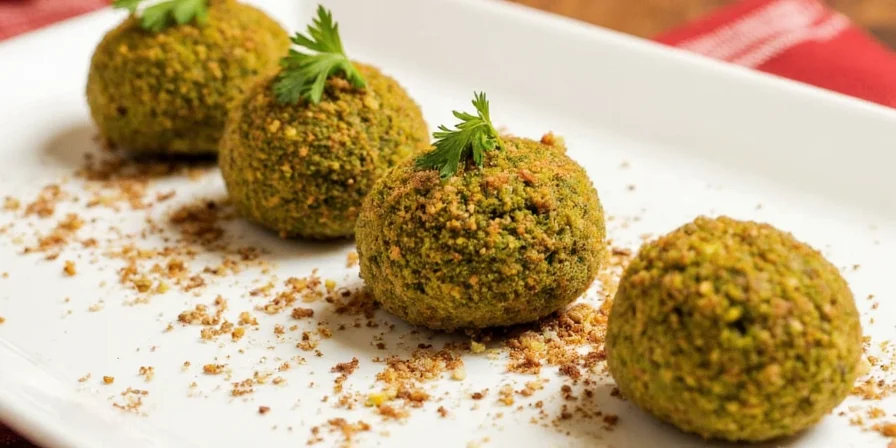
Top 5 Tips for Perfect Homemade Falafel Seasoning
- Toast whole spices first: Heat cumin and coriander seeds in a dry pan for 90 seconds before grinding. This brings out 3x more flavor.
- Use fresh spices: Spices lose potency after 6 months. Check freshness by rubbing between your fingers - strong aroma means good quality.
- Store properly: Keep in an airtight container away from light. Glass jars work best - keeps seasoning fresh for months.
- Adjust for your beans: Chickpea falafel needs more garlic (add 1 extra tsp), while fava bean versions need more cumin.
- Taste as you go: Mix a small amount with water to test flavor before adding to your falafel batter.
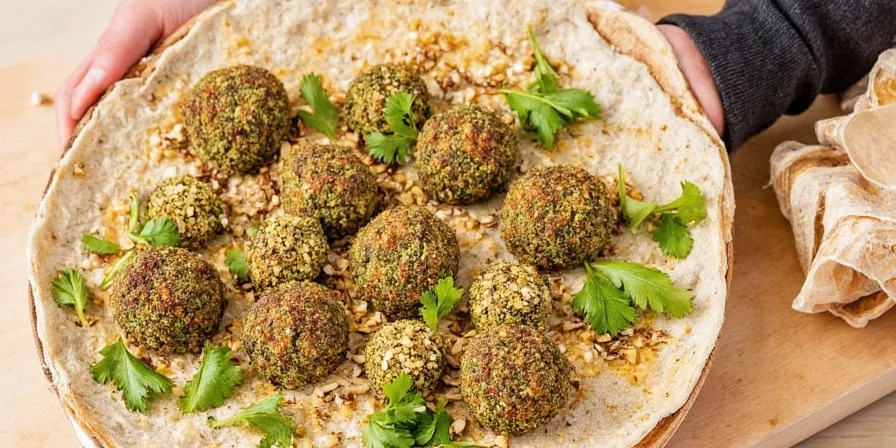
3 Secret Ingredients Restaurants Use
While the basic 7 spices make great falafel, these 3 additions take it to restaurant-quality:
- Lemon zest: Just 1 teaspoon adds brightness without making the mixture wet.
- Sumac: 1/2 teaspoon gives that subtle tang authentic Middle Eastern falafel is known for.
- Cayenne pepper: A pinch (1/8 teaspoon) adds depth without noticeable heat.
Regional Variations: Egyptian vs. Lebanese vs. Israeli
Authentic falafel seasoning varies by region. Here's what makes each style unique:
| Region | Cumin:Coriander Ratio | Special Ingredients | Best For |
|---|---|---|---|
| Lebanese | 2:1 | Dried mint | Chickpea falafel |
| Egyptian | 4:1 | Extra garlic, no parsley | Fava bean falafel |
| Israeli | 1.5:1 | Cardamom, extra parsley | Street-style falafel |

Store-Bought vs. Homemade: Which Is Better?
| Factor | Store-Bought Mix | Homemade Mix |
|---|---|---|
| Flavor | Good but standardized | Fresher, more vibrant |
| Cost per batch | $0.75-$1.00 | $0.20-$0.30 |
| Customization | None | Adjust to taste |
| Shelf life | 6-12 months | 3 months (fresh flavor) |
| Authenticity | Varies by brand | True to regional styles |
Visual Spice Ratio Guide
Here's an easy reference for getting your ratios right every time:
| Spice | Basic Ratio | For Stronger Flavor | For Milder Flavor |
|---|---|---|---|
| Cumin | 2 tbsp | 2.5 tbsp | 1.5 tbsp |
| Coriander | 1.5 tbsp | 1 tbsp | 2 tbsp |
| Paprika | 1 tbsp | 1.5 tbsp | 1/2 tbsp |
| Garlic powder | 1 tbsp | 1.5 tbsp | 3/4 tbsp |
| Dried parsley | 1 tbsp | 1.5 tbsp | 1/2 tbsp |
| Black pepper | 1 tsp | 1.5 tsp | 1/2 tsp |
| Salt | 1.5 tsp | 2 tsp | 1 tsp |
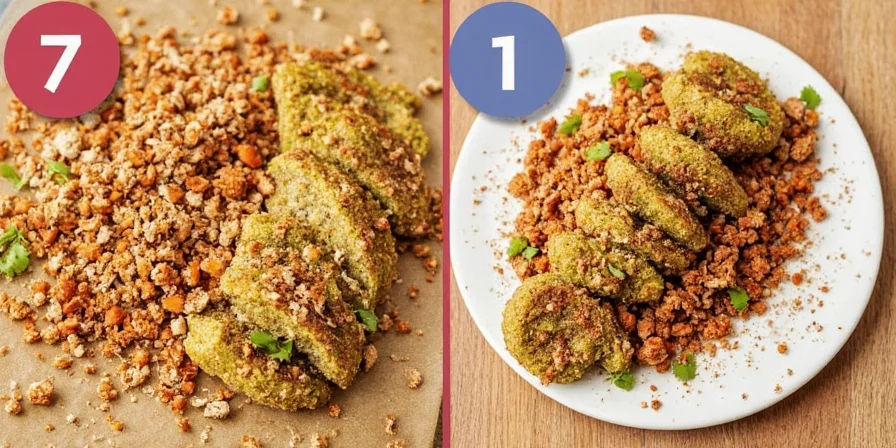
Final Thoughts
Creating perfect falafel seasoning doesn't require special skills or hard-to-find ingredients. With just 7 basic spices and the right ratios, you can make authentic-tasting falafel at home that rivals your favorite Middle Eastern restaurant.
Start with the basic 7-spice blend, then experiment with regional variations as you become more comfortable. Remember to toast your whole spices for maximum flavor, and don't be afraid to adjust ratios to match your personal taste.
The best part? Homemade falafel seasoning costs pennies per batch and lets you control exactly what goes into your food. Once you try it, you'll never go back to store-bought mixes again.
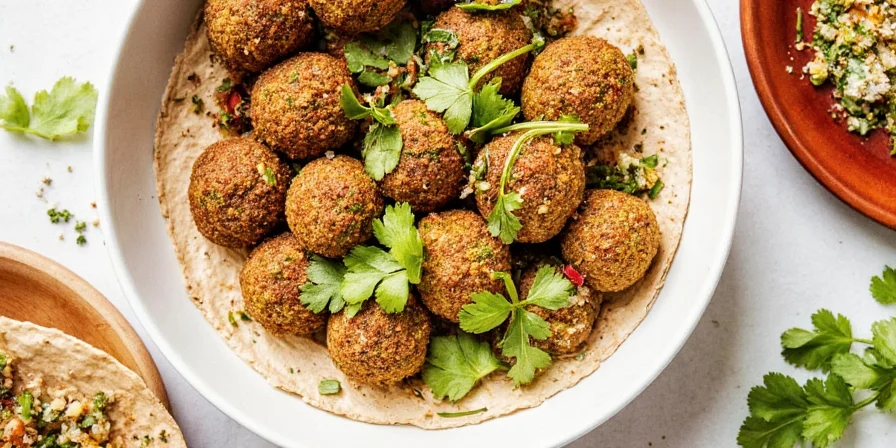
Frequently Asked Questions
What's the most common mistake when making falafel seasoning?
Using pre-ground spices that have lost their potency. Always start with fresh spices, and toast cumin and coriander seeds before grinding. This simple step makes the biggest difference in flavor quality.
Can I make this without a spice grinder?
Yes! Use pre-ground spices instead of whole seeds. Just increase the amounts by 25% since ground spices are less potent. For example, use 2.5 tablespoons ground cumin instead of 2 tablespoons whole seeds.
How do I fix bland falafel seasoning?
Add 1/2 teaspoon of lemon zest powder or a pinch of sumac. These ingredients brighten flavors without adding liquid. For immediate fix, mix in 1/4 teaspoon more garlic powder and cumin.
Why does my homemade mix taste different than restaurant falafel?
Most restaurants use freshly toasted and ground spices daily. Try toasting your cumin and coriander seeds just before grinding. Commercial mixes often contain less cumin than authentic recipes - increase cumin by 25% for more traditional flavor.
Can I substitute fresh herbs for dried in the seasoning mix?
No - fresh herbs add moisture that causes the spice mix to clump and spoil quickly. Dried herbs work best in dry seasoning mixes. If you want fresh herb flavor, add minced parsley or dill directly to your falafel batter instead.
How long does homemade falafel seasoning last?
Stored in an airtight container away from light and heat, it stays fresh for 3 months. For longer storage, keep in the freezer where it maintains quality for 6 months. Test freshness by rubbing some between your fingers - strong aroma means it's still good.

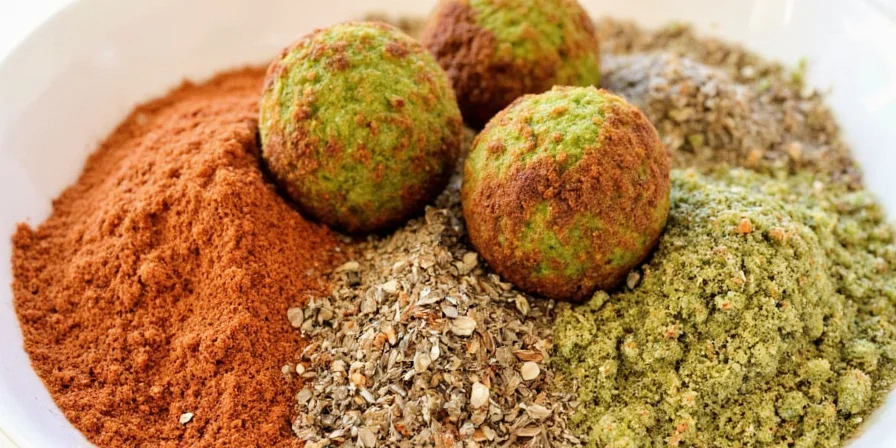









 浙公网安备
33010002000092号
浙公网安备
33010002000092号 浙B2-20120091-4
浙B2-20120091-4